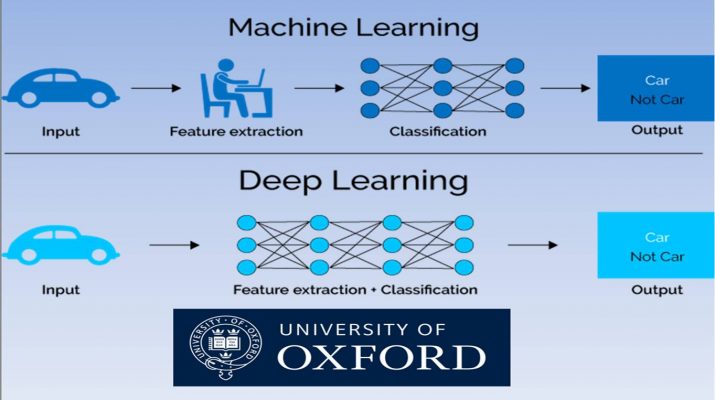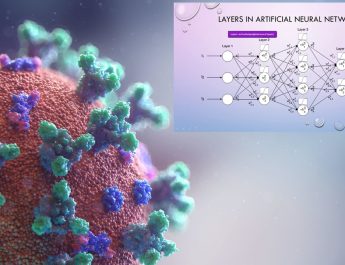Deep Learning methods achieve state-of-the-art results on a suite of natural language processing problems. What makes this exciting is that single models are trained end-to-end, replacing a suite of specialized statistical models.
The University of Oxford in the UK teaches a course on Deep Learning for Natural Language Processing and much of the materials for this course are available online for free. (https://machinelearningmastery.com)
This is an advanced course on natural language processing. Automatically processing natural language inputs and producing language outputs is a key component of Artificial General Intelligence. The ambiguities and noise inherent in human communication render traditional symbolic AI techniques ineffective for representing and analysing language data. Recently statistical techniques based on neural networks have achieved a number of remarkable successes in natural language processing leading to a great deal of commercial and academic interest in the field
This is an applied course focusing on recent advances in analysing and generating speech and text using recurrent neural networks. We introduce the mathematical definitions of the relevant machine learning models and derive their associated optimisation algorithms. The course covers a range of applications of neural networks in NLP including analysing latent dimensions in text, transcribing speech to text, translating between languages, and answering questions.
These topics are organised into three high level themes forming a progression from understanding the use of neural networks for sequential language modelling, to understanding their use as conditional language models for transduction tasks, and finally to approaches employing these techniques in combination with other mechanisms for advanced applications. Throughout the course the practical implementation of such models on CPU and GPU hardware is also discussed.
GitHub Link: https://github.com/oxford-cs-deepnlp-2017/lectures
Lecture 1a – Introduction [Phil Blunsom]
This lecture introduces the course and motivates why it is interesting to study language processing using Deep Learning techniques.
Lecture 1b – Deep Neural Networks [Wang Ling]
This lecture revises basic machine learning concepts that students should know before embarking on this course.
Lecture 2a – Word Level Semantics [Ed Grefenstette]
Words are the core meaning bearing units in language. Representing and learning the meanings of words is a fundamental task in NLP and in this lecture the concept of a word embedding is introduced as a practical and scalable solution.
Lecture 2b – Overview of the Practicals [Chris Dyer]
This lecture motivates the practical segment of the course.
Lecture 3 – Language Modelling and RNNs Part 1 [Phil Blunsom]
Language modelling is important task of great practical use in many NLP applications. This lecture introduces language modelling, including traditional n-gram based approaches and more contemporary neural approaches. In particular the popular Recurrent Neural Network (RNN)
Lecture 4 – Language Modelling and RNNs Part 2 [Phil Blunsom]
This lecture continues on from the previous one and considers some of the issues involved in producing an effective implementation of an RNN language model. The vanishing and exploding gradient problem is described and architectural solutions, such as Long Short Term Memory (LSTM), are introduced.
Lecture 5 – Text Classification [Karl Moritz Hermann]
This lecture discusses text classification, beginning with basic classifiers, such as Naive Bayes, and progressing through to RNNs and Convolution Networks.
Lecture 6 – Deep NLP on Nvidia GPUs [Jeremy Appleyard]
This lecture introduces Graphical Processing Units (GPUs) as an alternative to CPUs for executing Deep Learning algorithms. The strengths and weaknesses of GPUs are discussed as well as the importance of understanding how memory bandwidth and computation impact throughput for RNNs.
Lecture 7 – Conditional Language Models [Chris Dyer]
In this lecture we extend the concept of language modelling to incorporate prior information. By conditioning an RNN language model on an input representation we can generate contextually relevant language. This very general idea can be applied to transduce sequences into new sequences for tasks such as translation and summarisation, or images into captions describing their content.
Lecture 8 – Generating Language with Attention [Chris Dyer]
This lecture introduces one of the most important and influencial mechanisms employed in Deep Neural Networks: Attention. Attention augments recurrent networks with the ability to condition on specific parts of the input and is key to achieving high performance in tasks such as Machine Translation and Image Captioning.
Lecture 9 – Speech Recognition (ASR) [Andrew Senior]
Automatic Speech Recognition (ASR) is the task of transducing raw audio signals of spoken language into text transcriptions. This talk covers the history of ASR models, from Gaussian Mixtures to attention augmented RNNs, the basic linguistics of speech, and the various input and output representations frequently employed.
Lecture 10 – Text to Speech (TTS) [Andrew Senior]
This lecture introduces algorithms for converting written language into spoken language (Text to Speech). TTS is the inverse process to ASR, but there are some important differences in the models applied. Here we review traditional TTS models, and then cover more recent neural approaches such as DeepMind’s WaveNet model.
Lecture 11 – Question Answering [Karl Moritz Hermann]
Lecture 12 – Memory [Ed Grefenstette]
Lecture 13 – Linguistic Knowledge in Neural Networks
Source: Zafarullah Mahmood




